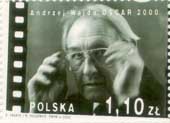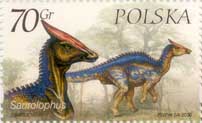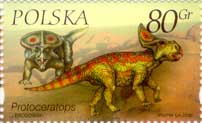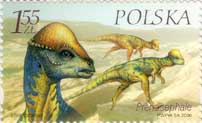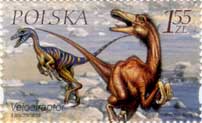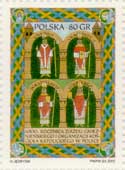| |
|
In March 2000, the Polish Post will introduce 3 post stamps into the market, including one in the form of the block, within the issue "1000th anniversary of the Gniezno Summit and the organization of the Catholic Church in Poland". The jubilee this year creates an unrepeateable occasion to remind and stress the historic importance of that event in the history of the state, nation, and church.
The Gniezno summit, an event of an international importance, was a proof of political strives of the German Emperor Otto III, wishing to create one monarchy, within which there would function four parallel states: Rome (Italy), Gaul (Burgundy and Low Lotharingia), Germania (Germany), and Sclauinia (Poland, or rather western Slovian states). The inclusion of Poland was doubtlessly connected with its adoption of the baptism in 966. The state's position strengthened thanks to it offered advantageous conditions to establish a co-operation with two powers of Europe of those times, e.g. the empire and the Holy See.
The presented series of the stamps was subject to a miniature, Romane stylization, characteristic for Medieval Ages, with the rims full of the biblical symbolism.
Individual stamps represent:
PLN 0.70 - Otto III surrounded by priests and the court in the moment of granting the diadem to Bolesław Chrobry. Although the gesture did not fulfill crowing ceremony requirements (which took place in 1025), the Emperor has already accepted the authority of Chrobry in Poland, and including the governor into the group of the highest Empire's notables.
PLN 0.80 - personalities of consecutive bishops in triforium sections with the name of the Archbishopric of Gnesna and individual dioceses: Cracovia, Wratislavia, Colberga. A page from the Emmeram Gospel Book was a patter for the illustration. The stamp commemorates the creation of the achbishopric and bishopric areas subjected to it: Cracow, Wrocław, and Kołobrzeg. A serparate province dependant only on Rome was an extremely valuable political gain and it required an importance and uniformity of the Polish state.
PLN 1.55 - Otto III as the Roman Emperor, sitting on the throne and holding authority insignia in his hands. Personifications of individual provinces approach him: Roma with a bowl full of jewels; Gaul with an olive branch, Germania with a horn of plenty, and Sclauinia with an authority disk. The illustration is based on a miniature of Otto III from the Gospel Book. It renders the political situation of Europe of those times and symbolises the achievement of a position of a European state by Poland.
On the day of introducing the stamps into the market, there will be sold two types of first day envelopes (FDC) with a special date seal in the Post Office Gniezno 1. |
